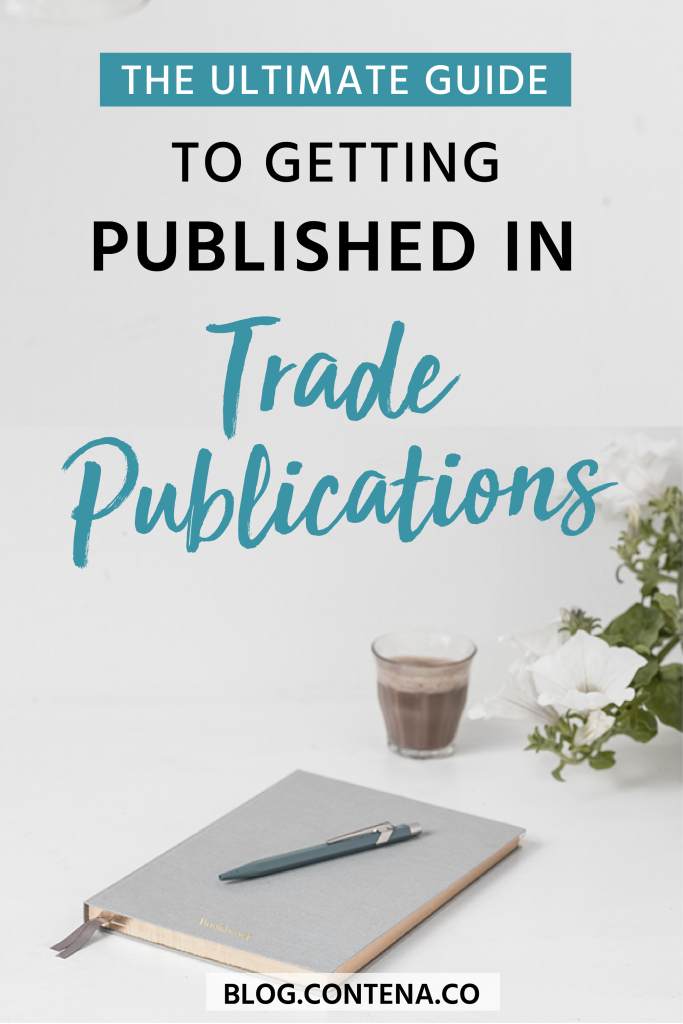As you start expanding your roster of clients you’ll want to gradually take on more and more higher paying gigs.
This is where custom pubs and trade magazines come into their own. These publications are usually incredibly lucrative. However, there’s a bit of knack to scoring this kind of work.
Never fear, we’re going to break it all down for your here in this article. Let’s dive in!
What Kind of Content Is This?
This begs the question, what are custom magazines and trade publications?
What are Trade Pubs?
These are magazines tailored to professionals within a specific industry. Almost every field has at least one.
Occasionally, these pay writers as much as $1 per word!
Typically, these editors don’t receive as many pitches in comparison to glossy magazines, so you’re way more likely to get the gig!
What are Custom Magazines?
These are magazines produced for the distribution of a particular company or organization.
The work available is incredibly diverse which makes it a fabulous opportunity for freelance writers. Similar to trade pubs, some companies pay as much as $1 per word.
How to Find Trade Pubs and Custom Mags to Pitch To
If you’re not sure where to find trade pubs and custom magazines, then the Writer’s Market is a fabulous resource. You can subscribe to the online version, for a reasonable cost.
This enables you to conduct advanced searches for both ‘custom magazines’ and ‘trade magazines’ across a plethora of industries.
This generates tons of useful information, including:
- The name and email address of the editors
- The proportion of freelancers used to produce the publication
- Specific tips for pitching that particular magazine
However, if you’re on a tight budget, just run a quick Google search for trades magazine/custom magazines in your industry, and you should find a few places to send a pitch.
How to Send a Killer Query Letter
1. Research. Research. Research.
Before drafting a query letter, you need to know the following about the publication you’re pitching to:
- Their target demographic
- Their tone of voice
- The kind of topics they publish (if they’ve written an article featuring the subject within the last year- steer clear)
- The average length of their features
The aim is to gather enough info and to ensure your query letter matches the style of the magazine you’re pitching to.
For example, how do they start their pieces? An anecdote? A shocking fact? A quote? As you read through their archives, you’ll notice patterns in how they format their work.
Once you spot these trends, you can mimic them in your email.
2. Contact the Relevant Editor
NEVER send a query addressed; ‘ To whom it may concern,’ ‘Dear Editor,’ or ‘Hi there!’ You need to find the name of the correct editor as well as their specific email address.
Do a little investigating on their website and LinkedIn page, see if you can find their direct email address. You could also use Hunter.io.com to further your search.
3. Craft an Intriguing Subject Line
Use an email subject like that communicates to the recipient you’re a writer who’s ready and willing to work. For example; ‘Query from Writer [insert your title idea]’
Top Tip: never use punctuation in your subject lines. This massively increases the chances of being flagged as spam- not cool.
4. Your Query Should be Jam-Packed with Evidence
It’s imperative you spend time researching your topic idea. By this we mean:
- Gathering reliable statistics
- Conducting a mini-interview with an industry expert
- Honing in on why their audience would benefit from the information you’re providing
This is essential for scoring the gig. When an editor sees a story that’s already halfway to completion, you’re seen as way less of a risk.
People want good quality content to publish, so show them what you’re capable of!

How Do I Structure a Query Letter?
After you’ve addressed the editor by their name, try following the below structure:
Paragraph one: Grab the attention of the editor immediately, by diving straight into the first section of your article. Editors want to engage with their readers from the get-go so, it’s essential to demonstrate you can craft an attractive opener.
Paragraph two: Explain the scope of the article, a possible title, and the structure of your piece.
Section three: Provide even more background information. What sources are you going to use? Who are you planning on interviewing? What practical information are you going to provide?
Paragraph four: At the very end of your query letter, explain why you’re the writer for the job. Mention any previous experience you have that qualifies you. Do you have bylined work you can reference? If so, insert a link to it. Jot down anything that helps prove to the editor you’re the real deal.
Top Tip: This section shouldn’t be more than three lines longs. Keep it concise!
Round it off and ask for the sale: It’s essential you tell the editor you actually want to write the piece yourself! So, say something along the lines of; ‘I’d love to write this piece for you, do you think it’s a good fit for your audience?’
Any Other Advice?
Here are a few final tips to take on board:
1. Proofread- Twice
Like we’ve already said, your query letter is a trial run to show the editor what you’re capable of. This means no typos and no grammar mistakes- everything needs to be perfect.
Otherwise, you’ll fail to make a good impression and the query you spent so long drafting, will probably end up in the bin. Do yourself a solid and triple check everything before hitting send!
2. Send Numerous Pitches
Don’t be disheartened if you don’t receive a response. Editors are busy, it can sometimes take months for them to get back to you.
In light of this, you need to be sending the same query to plenty of other publications. Otherwise, it’ll be ages before you get the results you want. Period.
3. Don’t be Afraid to Follow Up
There’s a good chance you’ll need to follow up. Like we’ve just said editors are busy people. So there’s every chance they’ll forget your query unless you prompt them. This isn’t a reflection of your work, it’s just the way it is.
Top Tip: Bide your time. Wait at least two working weeks worth of business days before following up.
Then when you do, ping a polite email over just to check they received your query letter.
Don’t pester any further than that. Part of this process is knowing when to let the lead go.










